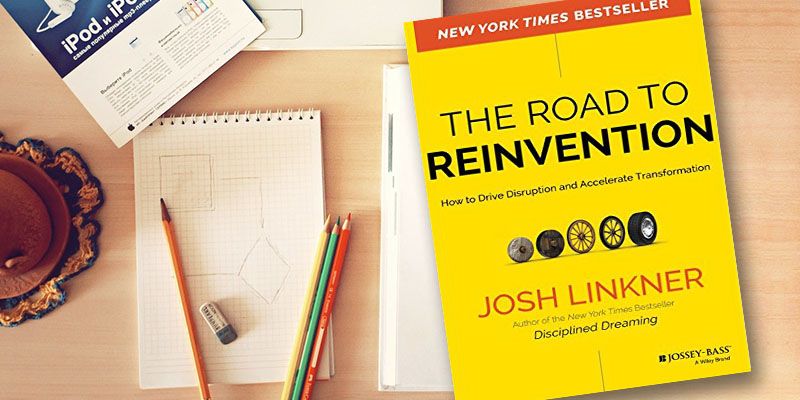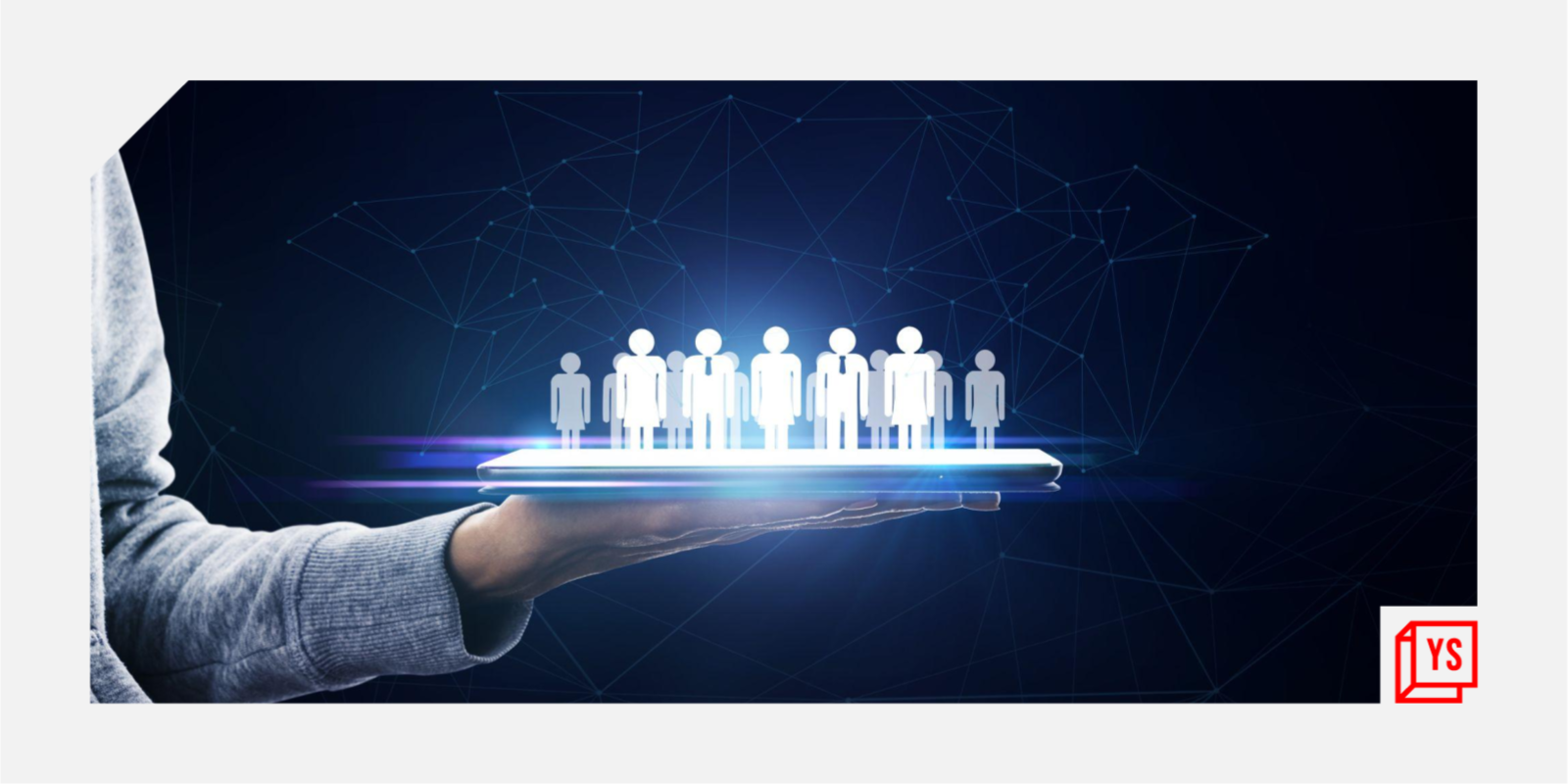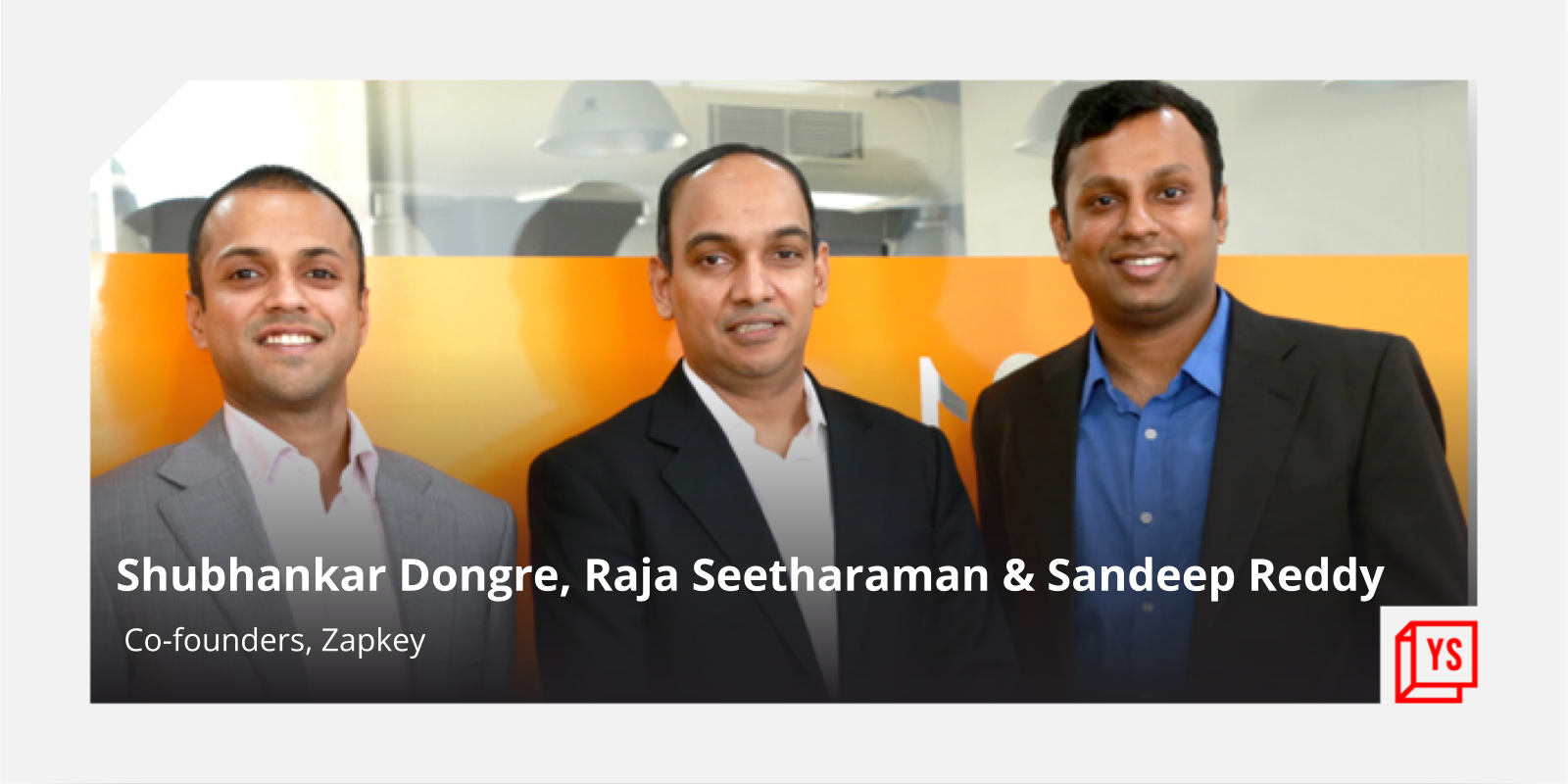Reinvent: 10 steps to transform your company, your career and yourself
Entrepreneurs as well as established giants tend to fail for a common reason: the inability to pivot or reinvent themselves. While it is a common tendency to rest on prior successes, it is important to be open and willing for transformation due to factors like new competitors or external changes.
“Reinvention is more than a good idea: it’s an essential practice,” says Josh Linkner, in his new book The Road to Reinvention: How to Drive Disruption and Accelerate Transformation. He draws on his own experience as a serial entrepreneur, jazz guitarist, venture capitalist and author. His book provides a range of illuminative examples, methods, checklists and motivational advice. Linkner’s earlier bestseller was Disciplined Dreaming.

See also my reviews of the related books Unrelenting innovation (by Gerald Tellis), Invent, Reinvent, Thrive (by Lloyd Shefsky), Frugal Innovation (by Navi Radjou and Jaideep Prabhu) and The Idea Hunter (by Andy Boynton and Bill Fischer).
Long-term success depends on having an ongoing process of reinvention deep in the DNA of an organisation. Reinvention happens not just in the product or branding but also in operations and at the workplace, and even applies to your own career. Here are my 10 takeaways and tips from this useful 260-page book.
Understand why reinvention is important
Creative hunger is the key to not just get started but stay ahead in the tough global economy. “Reinvention isn’t a single event, it’s a way of life,” says Linkner. Reinvention helps deal with emerging threats as well as in entering new uncontested territory. “Creativity is the new, most effectively sustainable competitive advantage; it’s the one thing that no company can outsource,” he says. Big companies can learn a lot from startups in this regard: how to be nimble, have fire in the belly, work with a sense of urgency, and have everyone contribute regardless of role (see also my article ‘15 innovation tips: how large corporations engage with startups’).
Examples of such business reinvention artists include: Tony Fadell from the iPod and iPhone teams, who left Apple to launch IoT startup Nest Learning Thermostat; Samsung’s assessment of the market to make the leap from low-quality goods in the 1990s to high-end smartphones today; Jessica Mindich’s launch of Caliber jewelry from recycled weapons; and Whirlpool, which expanded from washing machines to garage products. Companies which could not make such a leap include Borders’ Books, K-Mart and electronics retailer Circuit City.
Embrace the eight principles of reinvention
Linkner identifies eight principles that define the reinvention ethos: let go of the past, encourage courage in the company, embrace failure, do the opposite of current market players, imagine the future possibilities, compete with your own current offerings, reject limits, and aim beyond. “Reinvention is born in the imagination,” he says, and flips “Believe in it when you see it” into “Believe in it and you will then see it”. This calls for lifelong learning, grit and tenacity against naysayers.
Examples include: Nike’s culture (‘be like a sponge,’ ‘always offer something new’); entrepreneur Beck Besecker pivoting his startup multiple times till he hit a sweet spot with the retail app ShopWithIt; Dove’s Real Women ad campaign; IBM moving from computers to tech services; and Western Union changing from telegrams to money transfers.
‘Cannibalise’ your own offerings
Software product companies are experts at rolling out ever newer versions of their software which supersede earlier ones. Other companies can also learn from these examples, via trendspotting, idea hunting, makeovers, and expanding to larger or smaller categories. Otherwise, agile competitors can outflank your portfolio and strategy.
Examples include: HP’s combination of a printer with fax machine; SNUBA moving away from scuba diving to raft tanks; Veronika Scott’s design of parkas doubling as sleeping bags for poor people; Ashifi Gogo privoting from food authentication codes to pharmaceutical verification (Sproxil); and Ford’s re-tooling to avoid bankruptcy (unlike GM and Chrysler). Disruptors reinforce the rule here: Zipcar was launched by a startup and not Hertz or Avis; Red Bull originated independent of Pepsi or Coca Cola; and Prezi’s graphical presentation software is often regarded as better than Microsoft’s Powerpoint or Apple’s Keynote.
Retool your operations
Reinvention is not just about products or services, but process reengineering for internal operators and workplaces as well. Outdated “cannonballs” should be identified in a “friction audit” and swept away in a wave of operational innovation.
Examples include: Quicken Loans moving its mortgage service offerings online much faster and better than its competitors; Michael Abrashoff using stainless steel fasteners on his warship instead of sub-standard ones; and Michael Dubin’s Dollar Shave Club with a subscription model and viral marketing videos. Earlier examples include Toyota surpassing GM, Dell beating IBM, Walmart besting Sears and Kmart, UPS launching a B2B logistics offering, and Berry Gordy who built Detroit’s Motown Records into a one-stop for artistes and promotion (eg. for Stevie Wonder, Aretha Franklin, Supremes, Smokey Robinson, Temptations).
Creative vivid experiences
A vivid experience should connect to customers across all five senses, be manifested in all touch points, and deliver a sense of surprise and delight. Consistency and inspiration should go together.
Examples include: Doug Dietz re-designing GE’s MRI scanners and hospital rooms to make the experience child-friendly; Hendy Ford Hospital’s design like a five-star hotel; Robert Stephens’ design and branding of computer repair services as the sleek Geek Squad; and Whole Foods’ cross-merchandising in aisle design so that gifts bags are positioned next to wine bottles.
Tell a memorable story
A range of effective story types can be used to tell better business stories: quests, strange lands, love stories, rags-to-riches and even revenge. Stories should be simple, clear, brief, memorable and action-oriented; a sense of humour also helps. Internally, activities like a weekly huddle, competitions and awards can keep the storytelling machinery humming.
Examples include: YoReciclo’s depiction of the future of children’s lives in its campaign to increase recycling in Mexico; Stewart Resnick’s branding of clementine fruits as ‘Cuties’; Lululemon converting the fallout of faulty yoga pants into a commitment to excellence; Nick Friedman’s branding of junk removal services as College Hunks Hauling Junk; and Detroit’s reinvention as an opportunity city. The most successful exemplars are not just of brands but “firebrands” ranging from Martin Luther King Jr. (social change) to Starbucks (coffee culture and ‘third’ spaces).
Overhaul your culture
Culture “resets” can happen by recalibration of vision, effective internal branding, defining new core principles, organisational rituals, 360-degree feedback, and aligned training – though change management is not always easy even with a sense of urgency. Passion, momentum, persistence, creativity and courage will be needed in large doses. It may even be necessary to purge the old guard, especially if they put their interests before the company’s and obstruct progress.
Examples include: Apollo Tyres of India setting much higher goals and eventually becoming one of the Top 15 tyre companies in the world; RackSpace’s approach of “fanatical support” for its cloud computing customers; graphics firm Fathead’s weekly storytelling huddles for lessons learnt; Australian software company Atlassian’s 24-hour creativity burst sessions; Gregory Boyle’s Homeboy Industries which builds teamwork among ex-convicts and rehabilitates them; and Sushi Yasuda paying employees full salaries and benefits instead of below-minimum levels.
Reimagine your customer
Fresh insights can come from customer immersion and connects, segment analysis, category expansion, and clarity of offerings. Purchase habits and peer networking activities among customers keep changing, and companies will need to explore new distribution channels – sometimes borrowing ideas from other industries. Even seemingly mature segments can be disrupted or reinvented with a creative approach. “Twenty-something entrepreneurs racing with rabid fervor to dislodge your leadership position can disrupt distribution models overnight,” Linkner predicts.
Examples include: BirchBox’s subscription model for monthly cosmetics delivery (“discovery commerce”); Ikea’s furniture assembly kits for budget-conscious shoppers; SodaStream’s aeration machines which let consumers make carbonated drinks in their own bottles at home; Harley Davidson’s Owners Group communities; LegalZoom.com offering legal services online; Bella Sky Hotel’s women-only floors to better target women professionals; Diane Heavin’s launch of the Curves gym only for women; Roar Motorcycles designed only for women riders; and launch of Linkner’s Detroit Venture Partners to target startups in Detroit instead of the already-crowded Silicon Valley.
Transform your career
Reinvention applies not just to companies but individuals as well. Planning, trendspotting, reflection, learning and a sense of adventure can help reinvigorate your career. Working backwards from a future desired state, conducting a personal SWOT analysis and roping in mentors can help stay focused and committed.
Examples include: Mona Bijoor who left a wholesale fashion buyer to launch her own e-marketplace Joor; Sophia Amoruso who left home at age 17 to “dumpster dive” and eventually launched the fashion site NastyGal; Charles Best, a history teacher who launched DonorsChoose.org to fund school projects and eventually grew it into a USD 30 million educational sponsorship site; Jim Jannard, whose Oakley glasses firm began with motorcycle glasses and then expanded to ski goggles, sunglasses and eventually Red digital cameras for Hollywood; and Ruth’s Steakhouse chain launched by a single mother to provide employment and livelihood to other single mothers.
Earlier examples include jazz trumpet legend Miles Davis who kept reinventing his music style and pioneered bebop, cool, blue, hard bop and electric fusion genres; Bill Gates, who reinvented himself as one of the world’s greatest philanthropists and even roped in other billionaires to collaborate in the Giving Pledge; and J.K. Rowling, a struggling single mother on welfare who submitted her Harry Potter manuscript to 12 publishers who rejected it, and only then found success with the best-selling book series and blockbuster movies.
Forge your legacy
What do you want to be remembered for after you die? What do you need more of, and what can you do without? Where is your biggest impact, and what are you good at? Answering these questions will help you understand how to forge your legacy, and work towards it starting now, one step at a time (see also my review of the book Kaizen by Robert Maurer).
“True success comes from the ability to do well and do good,” explains Linkner. Business success need not come without social satisfaction and spiritual bliss. Decide whether you are happiest with a job, a career or a higher calling. Higher order success and satisfaction comes from cultivating compassion, empathy, courage, positivity, discipline, creativity and grit.
In terms of available resources, the ideal time to reinvent is from a position of strength, at the height of success, but that is also where corporate politics, cultural inertia or individual lethargy can set in. “A systematic, disciplined approach to the necessary process of continuous reinvention helps prevent false starts and flameouts,” he says.
“We’re living in a world of endless possibility,” concludes Linkner. Greatness can’t be a debate, it’s your destiny.
Each chapter of the book begins with an inspiring quote, and it would be appropriate to end this review with some of these quotes:
When I let go of what I am, I become what I might be. – Lao Tzu
Monotony is the awful reward of the careful. – A.G. Buckham
Twenty years from now, you will be more disappointed by the things that you didn’t do than by the ones you did do. – Mark Twain
There are two primary choices in life: to accept conditions as they exist, or accept the responsibility for changing them. – Dennis Waitley
You can never cross the ocean until you have the courage to lose sight of the shore. – Christopher Columbus
A ship is safe in harbour, but that’s not what ships are for. – William Shedd
It wasn’t raining when Noah built the ark. – Howard Ruff
I’ve learned that people will forget what you said, people will forget what you did, but people will never forget how you made them feel. – Maya Angelou
Your time is limited, so don’t waste it living someone else’s life. – Steve Jobs
Certain things catch your eye, but pursue only those that capture your heart. – Native American proverb
About the Author:
Josh Linkner (Twitter: @JoshLinkner) is CEO and Managing Partner of Detroit Venture. He is Founder and former CEO of ePrize, a leading interactive promotion agency, and founded three other tech startups before that. He has been on the board of over 40 companies, and raised over USD 100 million of venture capital. Linkner has won awards such as Ernst & Young ‘Entrepreneur of the Year’ and as a President Barack Obama ‘Champion of Change’ Award. His articles have appeared in Forbes, Wall Street Journal, USA Today, and The New York Times.











